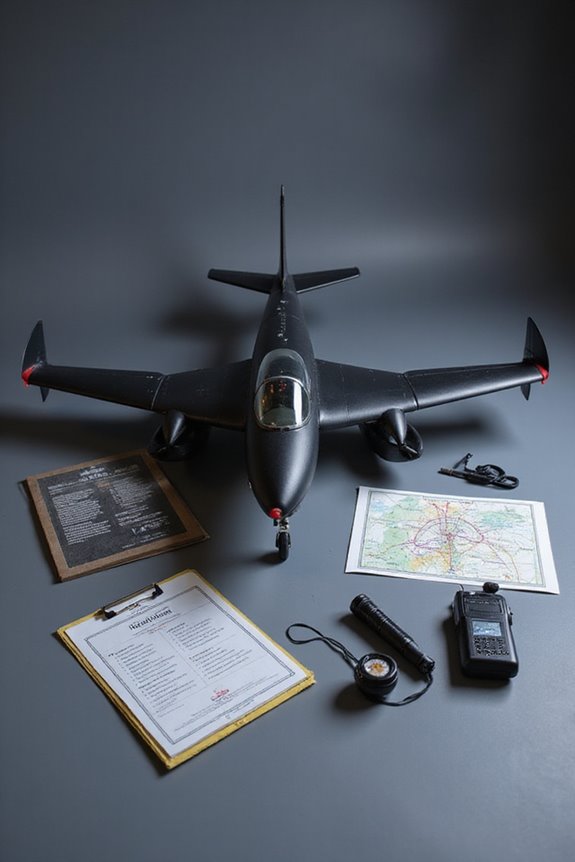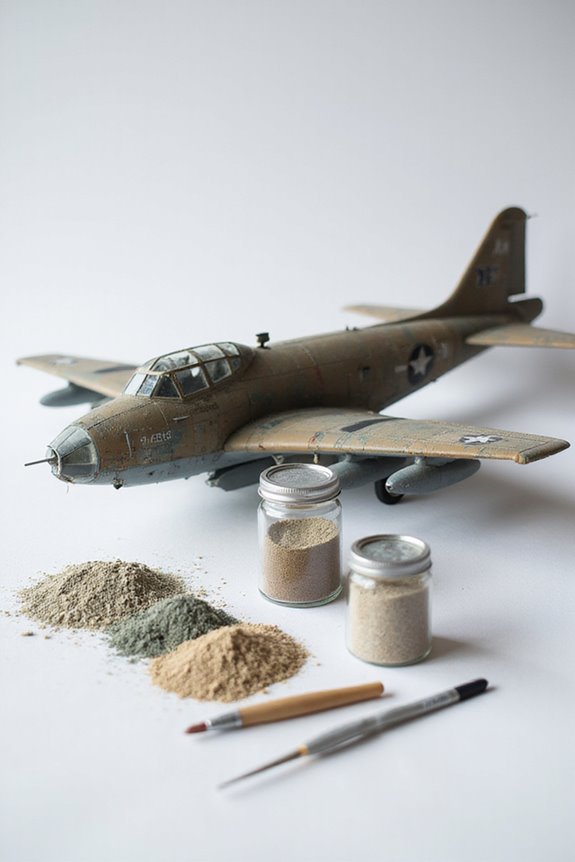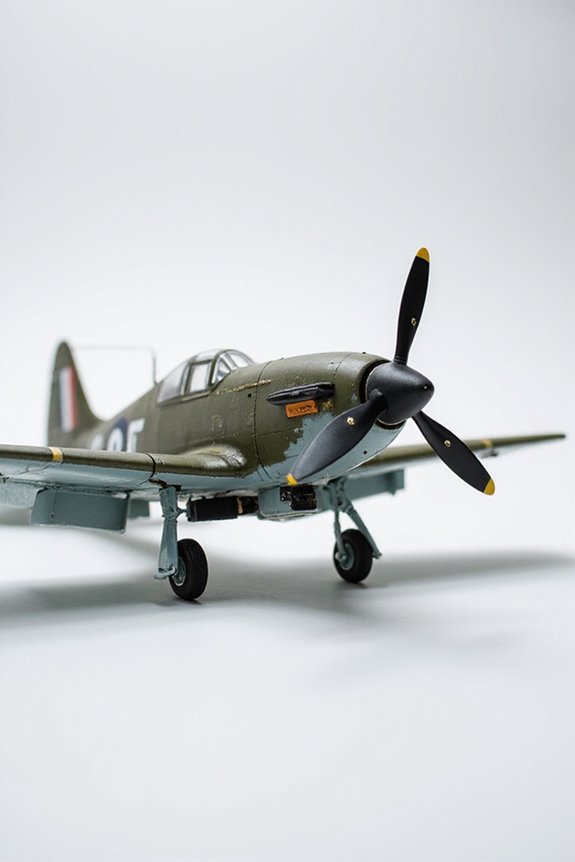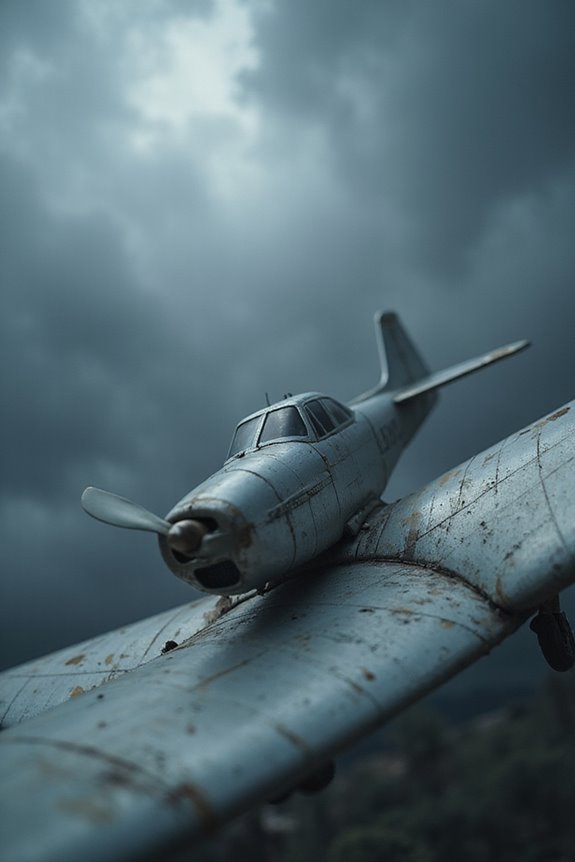When it comes to night flying, we need to know a few key requirements. First, we must hold a valid pilot certificate and have completed specific night training. This includes at least three hours of night flight time, with ten takeoffs and landings at an airport. Don’t forget to check those navigation lights! Using these skills, we’ll safely navigate the nighttime sky. Stick around, and we’ll cover more about night flying essentials!
Key Takeaways
- A valid pilot certification is required for night flying, ensuring completion of specific training and skills necessary for safe operation.
- At least three takeoffs and landings must be performed at night for pilots to carry passengers, enhancing experience and safety.
- Navigation and anti-collision lights must be operational during night flight to ensure visibility for the pilot and other aircraft.
- Minimum of 3 hours of night flight training, including 10 takeoffs and landings, is mandated by FAA regulations.
- Regular practice and reliance on instruments are crucial for maintaining skills and ensuring safety during reduced visibility conditions at night.
Regulatory Definitions of Night
When it comes to night flying, understanding the regulatory definitions of night is essential for all pilots. We often hear three key night definitions in the FAA: from one hour after sunset to one hour before sunrise, the end of evening civil twilight to morning civil twilight, and that magical hour around sunset. These regulatory variations guide us on when to light up navigation lights and help us log night flight time. It’s like having a map for our nighttime adventures! Each definition has practical implications. For example, you can’t carry passengers unless you’ve flown within the correct time frames. So, knowing these night definitions isn’t just good practice; it’s crucial for safety and compliance—plus, it keeps us in the skies with confidence!
Night Flying Regulations
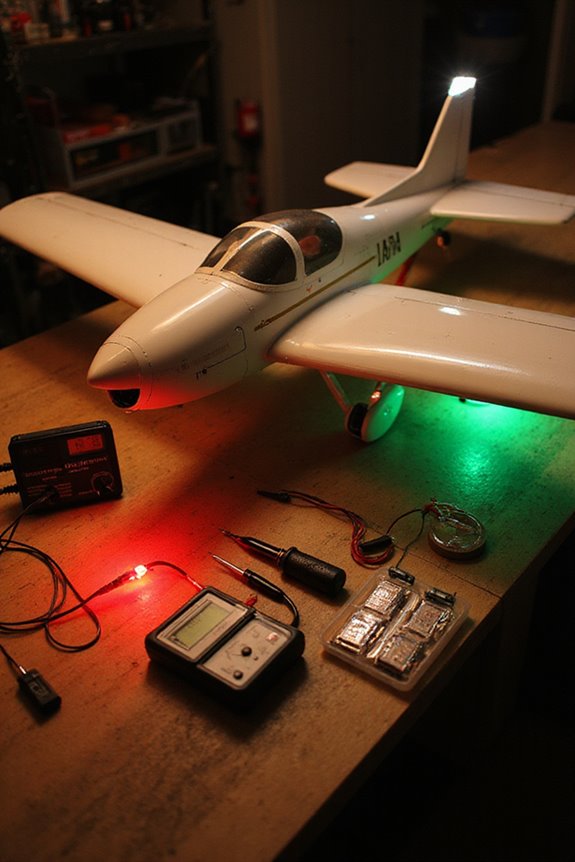
Night flying regulations can seem a bit tricky, but understanding them is essential for a smooth and safe experience in the skies. First off, we need our position lights on from sunset to sunrise, and if we have anti-collision lights, let’s make sure they’re working unless they interfere with our safety.
In Alaska, things change a bit when we can’t see prominent unlit objects from three miles. Keeping track of our flight path is key!
Also, if we want to carry passengers, we need at least three takeoffs and landings in the dark within the last 90 days. More importantly, we must be aware of visibility issues that can mess with our night vision. Safety first, right?
Pilot Requirements for Night Flight
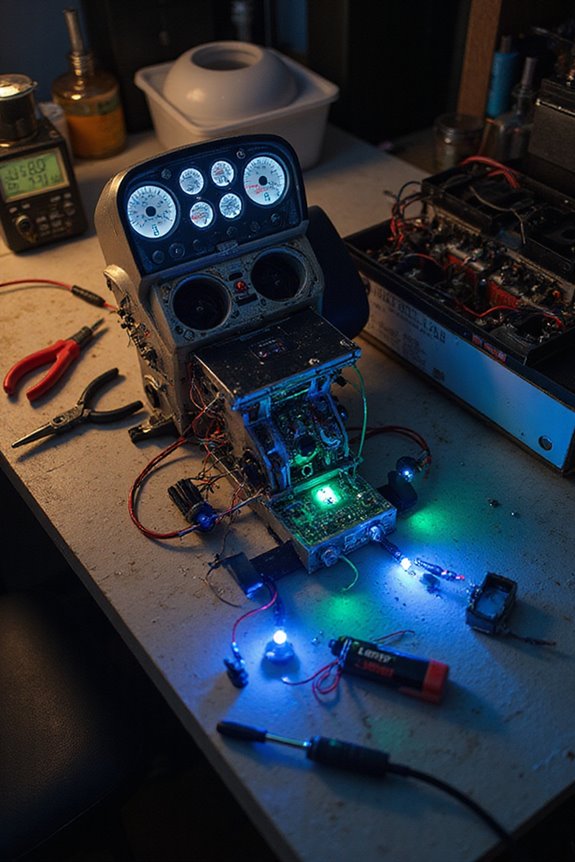
Flying at night isn’t just about having a fun evening view of the stars; it comes with its own set of pilot requirements. First, we need a valid pilot certification to engage in night flying. This certification isn’t just a pretty piece of paper; it means we’ve completed specific training that includes night flight experiences.
We must also follow FAA regulations, ensuring our aircraft has the right lights for visibility. Remember, practicing regular night flying is key; it keeps us sharp and ready. While there aren’t strict recent flight experience rules, it’s a good idea to keep up our skills. Every successful night flight adds to our confidence—just like upgrading to a new set of ninja flying skills!
Night Training Requirements
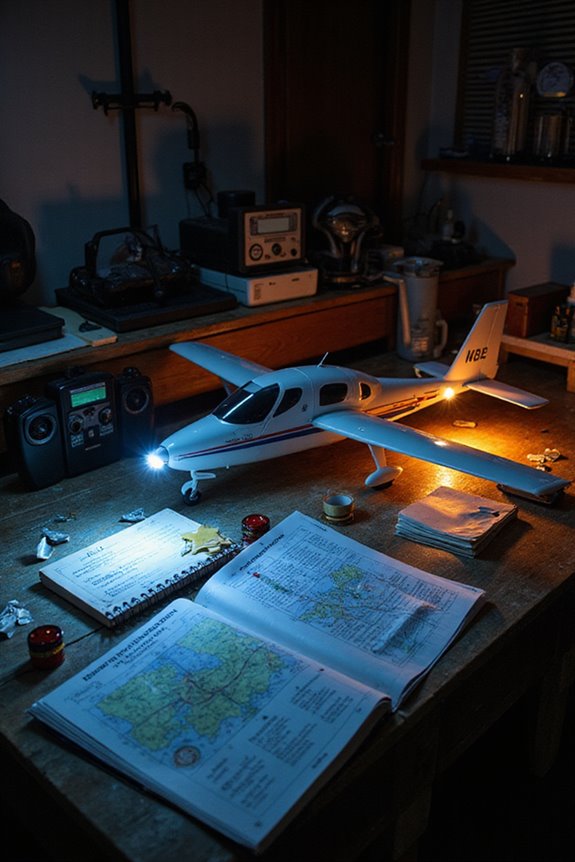
While we might think of the nighttime sky as a blanket of stars perfect for a magical flight, there are important training requirements we need to tackle first. For those of us looking to soar at night, the FAA requires a minimum of 3 hours of night flight training. This includes 10 takeoffs and landings at an airport, which can be more challenging under the dim lights of twilight.
We also need to complete a cross-country flight of over 100 nautical miles, adding a dash of adventure. Utilizing night training techniques helps us prepare for reduced visibility and those pesky night flying challenges. And remember, while instrument training isn’t mandatory for night flying, it definitely helps! So, let’s gear up and tackle this exciting adventure together!
Safety Considerations for Night Operations
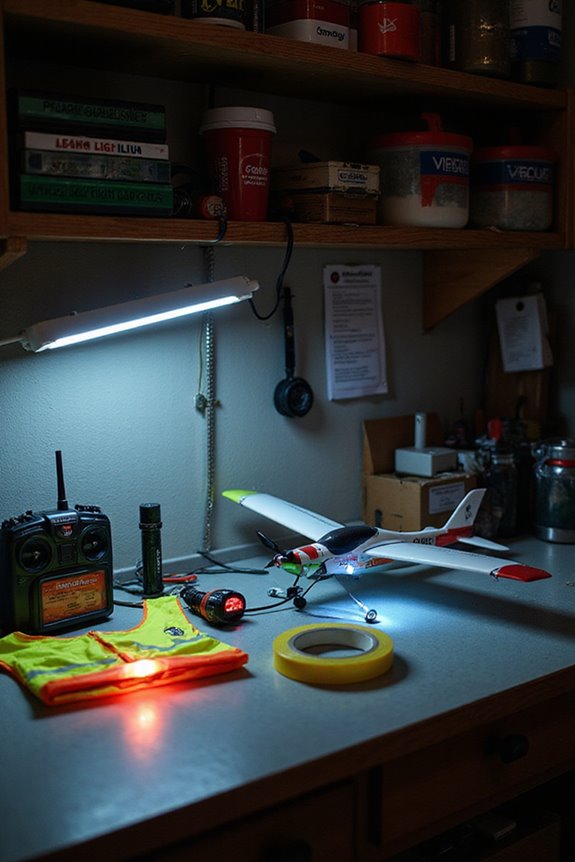
Getting ready to hit the night skies means we need to focus on more than just cool views of twinkling stars. First, we’ve gotta guarantee all our navigation lights are working, like those green and red markers on the wings. These are essential for visual awareness and safety.
As we soar, visual references outside can shrink, so we lean on instrument reliance. That means keeping an eye on our instruments and not just the stars. It’s like choosing between a GPS and a paper map—both are handy, but some nights we might need that GPS more.
Let’s remember to reduce our speed and stay cautious. Night flying’s a thrilling adventure, but it demands respect and smart decisions!
Logistical Considerations for Night Flying
When we talk about night flying, logistical considerations play a crucial role in ensuring a smooth operation. Route optimization is key; zig-zagging between airports can give us more emergency landing options, which is always a good backup.
Now, let’s chat about fuel management. We need to increase our fuel reserves when flying at night. Disorientation can sneak up on us, and airport services might not be as readily available. So, a little extra fuel goes a long way.
Don’t forget about weather briefings! They’re super important. Invisible weather can really throw a wrench in our plans. By being flexible and prepared, we keep our night flights safe and efficient. After all, the stars may guide our way, but we still need solid planning!
Aircraft Equipment for Night Flying
As we gear up for night flying, the right aircraft equipment can make all the difference—think of it as your trusty toolkit for starlit adventures. We need to guarantee our position lights are in good shape, helping others spot us on the dark canvas above. Anti-collision lights are essential, too; they keep us visible without stealing our night vision.
When it comes to cockpit lighting, having low-level lighting is key to maintaining our night vision. Night vision goggles? They’re a game changer, but remember to equip those specialized instruments like gyroscopic indicators. Don’t forget spare fuses—the last thing we want is to lose power unexpectedly! With the right gear, our night flights will be both safe and exhilarating.
Weather Preparedness for Night Flying
While the thrill of night flying is hard to beat, our weather preparedness is just as vital for a safe journey. We need to conduct thorough weather assessments before heading out. Visibility factors are significant; remember, night VFR flights require at least 3 statute miles of visibility.
Additionally, we shouldn’t forget about cloud clearance—aim for a ceiling of at least 1,500 feet to steer safely around obstacles. Watching for wind conditions, both on the ground and aloft, will help us avoid turbulence, too.
And let’s face it, flying on dark, moonless nights can feel like we’re maneuvering through a giant game of hide-and-seek with clouds. So, let’s keep those navigation charts handy and our wits about us!
Maintaining Night Currency
Night flying isn’t just about traversing darkness; it’s also about staying sharp and ready. To keep our night currency, we need to do some regular night practice. According to FAA regulations, we must log at least three takeoffs and landings in the dark every 90 days. These must be to a full stop and in the same type of aircraft we’d use with passengers.
Let’s not be complacent! Regular proficiency assessments help us identify areas needing improvement. Night flying can feel like a dance under the stars, but without skill, it can turn into a chaotic stumble. So, let’s keep our skills tuned and guarantee we’re always prepared for those nighttime adventures! Remember, safety is our best co-pilot!
Frequently Asked Questions
Can I Fly at Night in Any Type of Aircraft?
We can fly at night in various aircraft, but we must guarantee proper aircraft lighting and night vision capabilities. It’s essential to be equipped and trained for safe night operations to enjoy the experience fully.
How Does Night Flying Differ From Day Flying?
Steering through night’s nuances, we face fascinating navigation challenges that demand precise night vision. With reduced visibility and reliance on instruments, we must adapt our strategies for safe and successful flights under the starry skies.
Are There Additional Passenger Restrictions for Night Flights?
Yes, there are passenger limitations under night regulations. We must complete three takeoffs and landings during the night within the last 90 days to carry passengers legally, ensuring our proficiency in reduced visibility conditions.
What Should I Do if I Lose Power at Night?
Oh, losing power at night feels like a bad joke we’re all in. We should rely on our night emergency training, execute power failure procedures, and remember to keep calm while managing the descent to safety.
Can I Log Daytime Flight Hours as Night Hours?
We can’t log daytime flight hours as night hours due to night flight regulations. Logging flight hours must align with FAA definitions, ensuring we only document time that meets the proper nighttime criteria.

